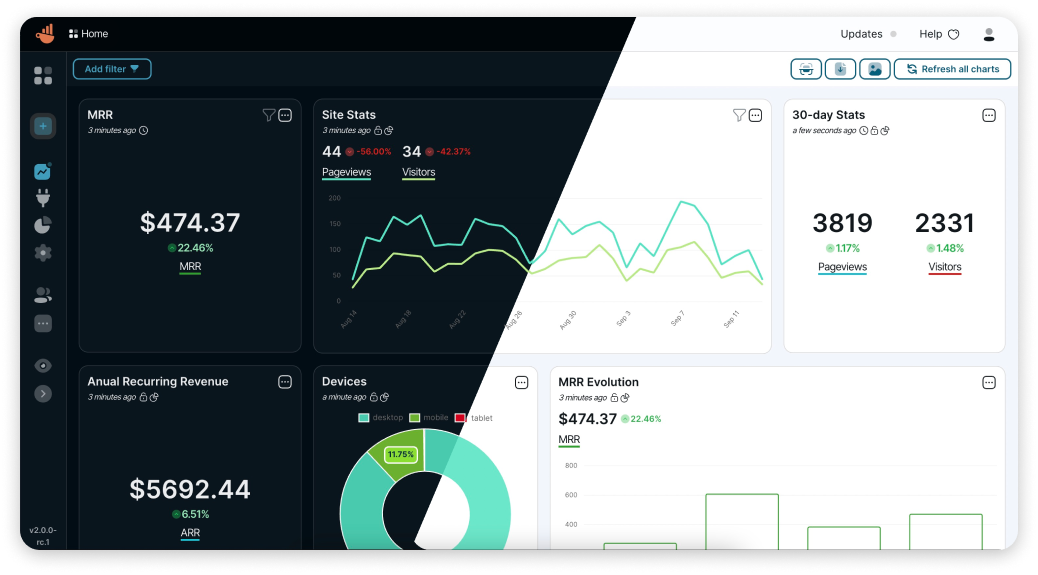Chartbrew is an open-source web application that can connect directly to databases and APIs and use the data to create beautiful charts. It features a chart builder, editable dashboards, embedable charts, query & requests editor, and team capabilities.
Chartbrew as a service is available here
💡 Have any ideas or discussion topics?
Currently, Chartbrew supports connections to these data sources.
- MySQL
- PostgreSQL
- MongoDB
- Firestore
- Realtime Database
- Google Analytics
- Customer.io
- REST APIs
Chartbrew also features dashboard templates with charts already prepared:
- Simple Analytics
- ChartMogul
- Mailgun
- Google Analytics
...or you can create your custom templates and replicate them across multiple dashboards.
- NodeJS v12 (should also work with v10)
- For M1 Macs you might need the latest v14 or v15
- NPM
- MySQL (5+) or PostgreSQL (12.5+)
It is recommended you head over to the more detailed documentation to find out how to set up Chartbrew
If you already have a MySQL or PostgreSQL server running, create a database called chartbrew and follow the prompts of the create-chartbrew-app command below.
Important Windows command line is not supported at the moment. Use something like Cygwin on Windows.
npx create-chartbrew-app chartbrewThe CLI tool creates a chartbrew/.env file which you can configure at any time if you want to change the database, API & client host, etc. The file contains comments explaining what each environmental variable is for. Check out which need to be set here.
Open two terminals, one for front-end and the other for back-end.
# frontend
cd client/
npm run start
# backend
cd server/
npm run start-devCheck the full guide in the docs.
A Chartbrew docker image is built whenever a new version is released.
Before running the commands below, make sure you have a MySQL server already running and an empty database that Chartbrew can use. The database name should match the value of the CB_DB_NAME variable.
For amd64 architecture:
docker pull razvanilin/chartbrew
docker run -p 4019:4019 -p 4018:4018 \
-e CB_SECRET=enter_a_secure_string \
-e CB_API_HOST=0.0.0.0 \
-e CB_API_PORT=4019 \
-e CB_DB_HOST=host.docker.internal \
-e CB_DB_NAME=chartbrew \
-e CB_DB_USERNAME=root \
-e CB_DB_PASSWORD=password \
-e REACT_APP_CLIENT_HOST=http://localhost:4018 \
-e REACT_APP_API_HOST=http://localhost:4019 \
razvanilin/chartbrewFor arm64 architecture:
docker pull razvanilin/chartbrew:latest-arm64
docker run -p 4019:4019 -p 4018:4018 \
-e CB_SECRET=enter_a_secure_string \
-e CB_API_HOST=0.0.0.0 \
-e CB_API_PORT=4019 \
-e CB_DB_HOST=host.docker.internal \
-e CB_DB_NAME=chartbrew \
-e CB_DB_USERNAME=root \
-e CB_DB_PASSWORD=password \
-e REACT_APP_CLIENT_HOST=http://localhost:4018 \
-e REACT_APP_API_HOST=http://localhost:4019 \
razvanilin/chartbrew:latest-arm64Read more on how to do this here
Many thanks to everybody that contributed to this open-source project 🙏


